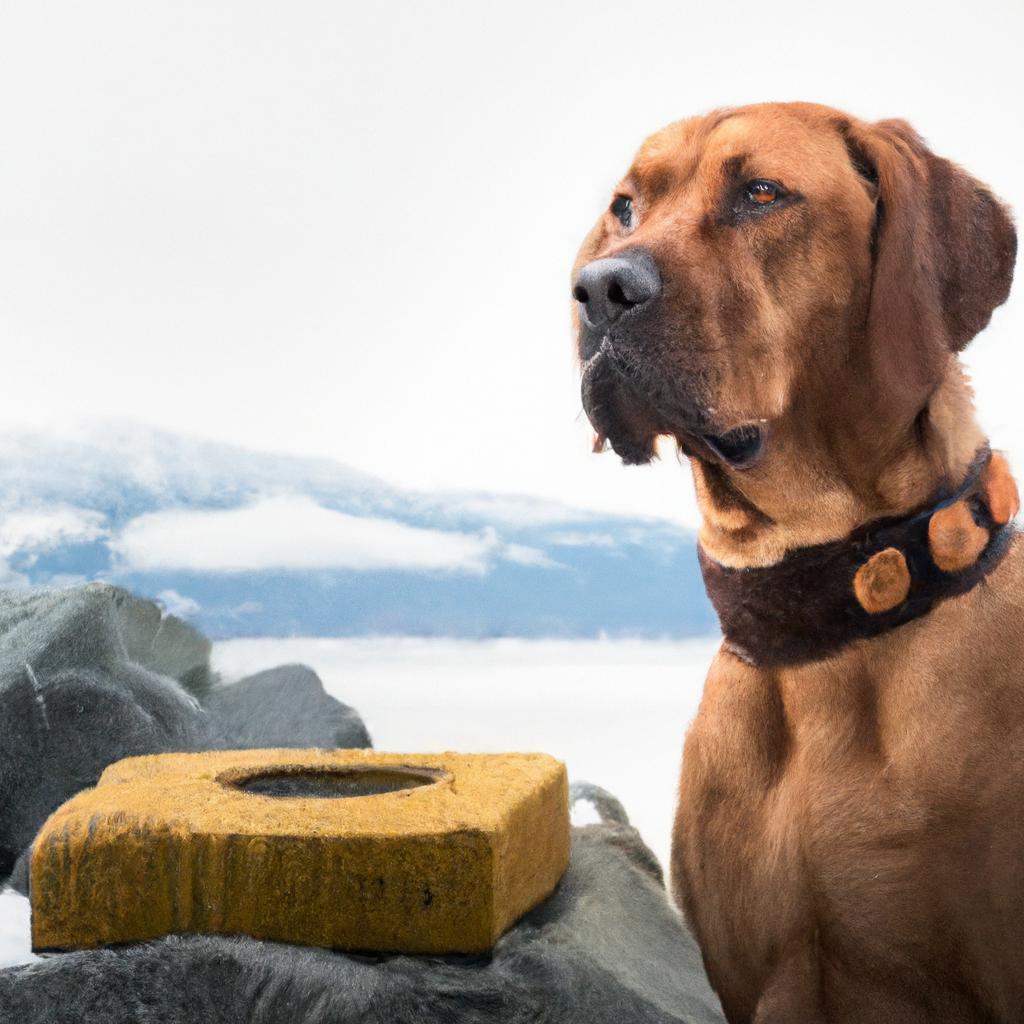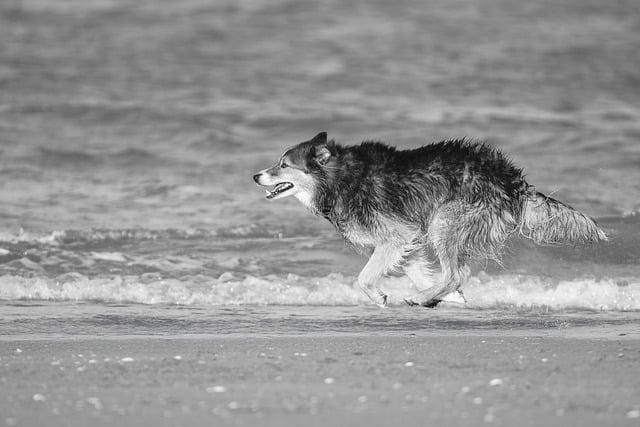Meet Zeus, the Great Dane who once held the title of the tallest dog in the world. Standing an astonishing 44 inches tall at the shoulder, Zeus was not just a pet; he was a gentle giant who captured hearts everywhere he went. Imagine walking down the street and seeing a dog that towers over most people! His size was awe-inspiring, but it was his friendly demeanor that truly won over fans. Zeus reminds us that greatness comes in all forms, and sometimes, the tallest among us can also be the most loving. Wouldn’t you want to meet a dog like that?
Contents
- Understanding the Characteristics of the Tallest Dog Breed
- Exploring the Health Considerations for Giant Dog Owners
- Training Tips for Managing Large Canine Companions
- Choosing the Right Environment for Your Tall Dogs Well-Being
- Q&A
Understanding the Characteristics of the Tallest Dog Breed
The tallest dog breed is renowned for its impressive stature, often towering over other breeds. These magnificent canines are characterized by their **long legs**, **elegant necks**, and **commanding presence**. Their height is not just a matter of measurement; it contributes to their overall demeanor and the way they interact with their environment. Owners of these dogs often find themselves in awe of their pet’s ability to stand out in any crowd, drawing attention and admiration wherever they go.
One of the most notable traits of this breed is their **gentle temperament**. Despite their size, they are often described as **affectionate**, **loyal**, and **playful**. This breed typically forms strong bonds with their families, making them excellent companions. Their calm nature allows them to coexist peacefully with children and other pets, dispelling the myth that larger dogs are inherently aggressive. Instead, they often exhibit a protective instinct, ensuring the safety of their loved ones.
In addition to their temperament, the tallest dog breed is also known for its **intelligence** and **trainability**. These dogs thrive on mental stimulation and enjoy engaging in various activities, from obedience training to agility courses. Their eagerness to please makes them highly responsive to commands, allowing for a rewarding training experience. Owners can foster a strong bond through consistent training, which not only enhances the dog’s skills but also enriches their relationship.
Health considerations are paramount for this breed, as their size can predispose them to certain conditions. Regular veterinary check-ups, a balanced diet, and appropriate exercise are essential to maintain their well-being. Potential owners should be aware of the importance of **joint health** and **weight management** to prevent issues such as hip dysplasia. By prioritizing these aspects, owners can ensure that their towering companions lead a happy, healthy life, full of adventures and cherished moments.
Exploring the Health Considerations for Giant Dog Owners
Owning a giant dog comes with a unique set of health considerations that potential owners must be aware of. These majestic animals, while often gentle giants, can face specific health challenges due to their size. Understanding these issues is crucial for ensuring a long, healthy life for your canine companion. Regular veterinary check-ups are essential, as they can help catch any potential problems early on.
One of the most significant concerns for large breeds is their susceptibility to **joint issues**. Conditions such as hip dysplasia and elbow dysplasia are common in giant dogs, which can lead to chronic pain and mobility issues. To mitigate these risks, it’s important to provide a balanced diet that supports joint health, alongside appropriate exercise that avoids excessive strain on their developing bodies. Regular consultations with a veterinarian can help tailor a fitness plan that suits your dog’s specific needs.
Another critical aspect to consider is **heart health**. Larger dogs are more prone to certain cardiovascular conditions, including dilated cardiomyopathy. This condition affects the heart’s ability to pump blood effectively, leading to serious health complications. Owners should be vigilant for signs such as lethargy, coughing, or difficulty breathing, and maintain a routine of heart health screenings as recommended by their vet. A heart-healthy diet and maintaining a healthy weight are also vital components of care.
Lastly, giant dog owners should be aware of the **nutritional needs** specific to their breed. Large dogs require a diet formulated to support their growth and overall health, which differs significantly from that of smaller breeds. High-quality, nutrient-dense food can help prevent obesity, which is a common issue that exacerbates other health problems. Additionally, understanding the importance of portion control and feeding schedules can help maintain a healthy weight, ensuring your giant dog remains active and vibrant throughout their life.
Training Tips for Managing Large Canine Companions
Training large canine companions requires a tailored approach that acknowledges their size and strength. **Consistency** is key; establish a routine that incorporates regular training sessions to reinforce commands and behaviors. Use clear, concise commands and ensure that all family members are on the same page to avoid confusion. This uniformity helps your dog understand expectations and builds a solid foundation for their training.
Positive reinforcement is an effective method for training large dogs. Rewarding good behavior with treats, praise, or playtime encourages them to repeat those actions. **Avoid harsh corrections**, as they can lead to fear or aggression, particularly in larger breeds. Instead, focus on redirecting unwanted behaviors and rewarding desired ones. This approach fosters a trusting relationship between you and your dog, making training a more enjoyable experience for both parties.
Socialization is crucial for large dogs, as it helps them learn how to interact appropriately with other animals and people. **Expose your dog to various environments, sounds, and situations** from an early age. This exposure can prevent behavioral issues and ensure that your dog is well-adjusted. Consider enrolling in group training classes or dog parks where they can meet other dogs and people in a controlled setting, reinforcing their social skills.
Physical exercise plays a significant role in managing large breeds. **Incorporate daily walks, play sessions, and mental stimulation** into your routine to keep your dog physically and mentally fit. A tired dog is often a well-behaved dog, as they are less likely to engage in destructive behaviors. Additionally, consider activities like agility training or obedience competitions to challenge your dog and strengthen your bond through shared experiences.
Choosing the Right Environment for Your Tall Dogs Well-Being
When it comes to ensuring the well-being of your tall dog, the environment plays a crucial role. Large breeds, such as Great Danes and Irish Wolfhounds, require ample space to move around comfortably. A cramped living area can lead to stress and anxiety, which may manifest in behavioral issues. Therefore, consider the following factors when selecting a suitable environment:
- Space: Ensure your home has enough room for your dog to stretch out, play, and roam freely. A spacious backyard or access to open areas is ideal.
- Flooring: Opt for non-slip surfaces to prevent injuries. Tall dogs are prone to joint issues, so soft flooring like carpet or rubber mats can provide comfort.
- Furniture Arrangement: Keep furniture and decor at a height that accommodates your dog’s size. Avoid sharp corners and fragile items that could be easily knocked over.
Outdoor environments are equally important for the physical and mental health of your tall dog. Regular exercise is essential, and a safe, secure yard allows for off-leash play. Additionally, consider the following outdoor elements:
- Fencing: Ensure your yard is securely fenced to prevent escapes, as tall dogs can easily jump over low barriers.
- Shade and Shelter: Provide shaded areas and shelter from the elements to protect your dog from extreme temperatures.
- Safe Play Areas: Designate areas free from hazards, such as toxic plants or sharp objects, to ensure your dog can play safely.
Socialization is another vital aspect of your tall dog’s environment. These breeds often thrive on companionship and interaction with both humans and other dogs. To foster a positive social atmosphere, consider:
- Dog Parks: Visit dog parks where your tall dog can interact with other dogs in a controlled environment.
- Training Classes: Enroll in obedience or agility classes to enhance social skills and provide mental stimulation.
- Playdates: Arrange playdates with other friendly dogs to encourage healthy social interactions.
Lastly, the emotional well-being of your tall dog is significantly influenced by the environment you create. A calm and nurturing atmosphere can help reduce anxiety and promote happiness. To achieve this, focus on:
- Routine: Establish a consistent daily routine for feeding, walks, and playtime to provide stability.
- Comfort Zones: Create cozy spaces with comfortable bedding where your dog can retreat and relax.
- Positive Reinforcement: Use positive reinforcement techniques to encourage good behavior and strengthen your bond.
Q&A
-
What breed holds the title for the tallest dog?
The Great Dane is widely recognized as the tallest dog breed. With their impressive height and gentle demeanor, they are often referred to as “gentle giants.” Their stature not only makes them stand out but also showcases their unique blend of strength and elegance.
-
How tall can a Great Dane get?
Great Danes can reach heights of up to 34 inches or more at the shoulder. The tallest recorded Great Dane, named Zeus, measured an astonishing 44 inches tall, setting a world record. This remarkable height makes them one of the most striking breeds in the canine world.
-
Are tall dogs like Great Danes suitable for families?
Absolutely! Great Danes are known for their friendly and affectionate nature, making them excellent family pets. They are typically good with children and other animals, and their calm demeanor can be a great addition to any household. Their size does require some space, but their loving personality more than compensates for it.
-
What are the care considerations for a tall dog?
Caring for a tall dog like a Great Dane involves specific considerations:
- Diet: They require a balanced diet to support their growth and maintain a healthy weight.
- Exercise: Regular exercise is essential to keep them fit and prevent obesity.
- Health Checks: Regular veterinary visits are crucial, as larger breeds are prone to certain health issues.
By understanding these needs, you can ensure a happy and healthy life for your tall canine companion.
the title of the tallest dog is not just a matter of height; it reflects the incredible diversity and uniqueness of our canine companions. Embrace the wonder of these majestic animals and consider welcoming one into your life.

大家好,我是彼得潘,專業的手法身體治療師。我喜歡探索和研究各種主題,並透過與人工智慧的合作分享專業、實用、有趣的文章。我們定期進行人工審核,以確保內容的準確性。如果您發現文章中有任何不準確的地方,請隨時與我們聯繫,我們會及時糾正。您可以透過 [email protected] 與我們聯繫。



